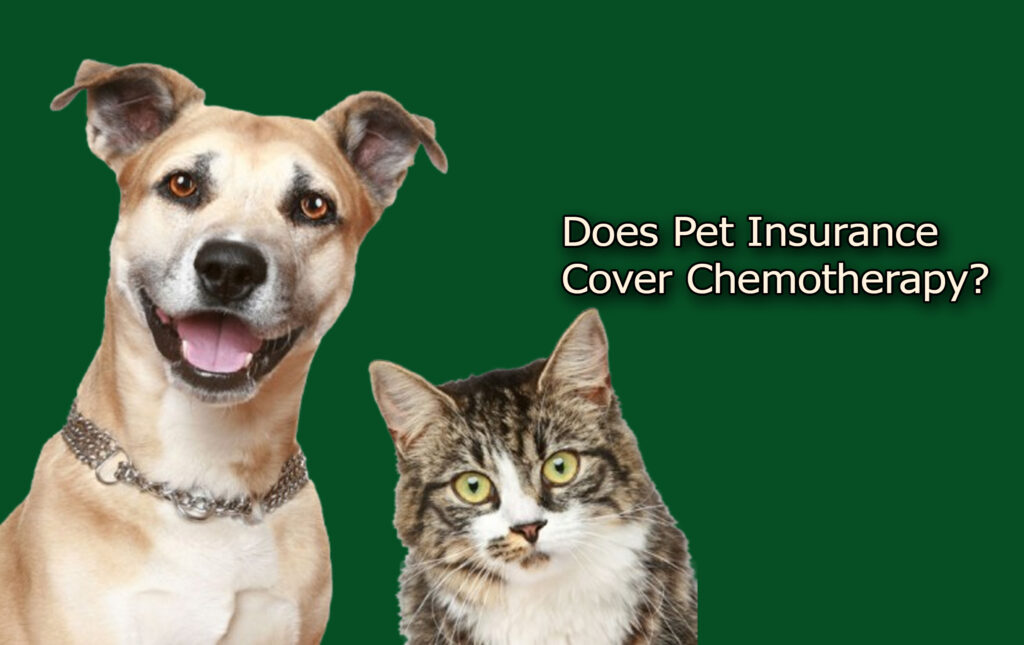Does pet insurance cover chemotherapy? Cancer is one of the most emotionally and financially challenging diagnoses a pet owner can face. Just like in humans, cancer treatment for pets can be extensive, often involving surgery, radiation, and chemotherapy.

While advances in veterinary medicine have made it possible for pets to live longer, healthier lives after diagnosis, the cost of cancer treatment, especially chemotherapy can be very huge and daunting. Depending on the type of cancer and the treatment plan, chemotherapy alone can cost thousands of dollars.
Given these expenses, many pet parents naturally ask: “Does pet insurance cover chemotherapy?” The good news is that many comprehensive pet insurance plans do cover chemotherapy and other cancer-related treatments.
As long as the condition isn’t pre-existing and the policy includes illness coverage, you will get covered.
Chemotherapy in Pets
Chemotherapy is a medical treatment that uses drugs to kill or slow the growth of cancer cells. It is commonly used in pets to treat various cancers, including lymphoma, mast cell tumors, leukemia, and more.
Now, while it may sound intimidating, chemotherapy for animals is often less aggressive than it is in humans, focusing more on quality of life than on eliminating the disease completely. Here are more details about how chemotherapy works:
- It is typically done in cycles over weeks or months
- Administered via injection, pills, or IV
- Often combined with surgery or radiation therapy for best results
- Side effects in pets are usually milder than in humans (e.g., mild nausea, fatigue, or decreased appetite)
Given the high cost, insurance coverage can play a vital role in making these treatments accessible and manageable.
Does Pet Insurance Cover Chemotherapy?
Yes, most pet insurance plans that include illness coverage will cover chemotherapy as part of their cancer treatment benefits.
However, there are more important limitations and policy details that you need to understand before assuming all cancer care is covered. Here are some things the coverage includes:
- Chemotherapy drugs and administration
- Specialist visits to the oncologists
- Diagnostic testing (biopsies, blood tests, X-rays, ultrasounds)
- Hospitalization related to treatment
- Follow-up appointments and supportive care (e.g., anti-nausea meds)
On the other hand, here are things the coverage usually excludes:
- Cancer diagnosed before policy enrollment or during the waiting period
- Experimental or alternative treatments not approved by veterinarians
- Costs beyond your policy’s annual or lifetime limits
- Deductibles and co-payments you’re responsible for
More importantly, you must be sure to review the “covered treatments” and “exclusions” sections of your pet insurance policy to know what you’re eligible to claim.
Pre-Existing Conditions and Waiting Periods
One important thing you must know is that pre-existing conditions are not covered by most pet insurance plans. If your pet was diagnosed with cancer or showed signs or symptoms before you enrolled in the policy or during the initial waiting period, chemotherapy and related treatments will be excluded from coverage.
The best way to avoid this limitation is to enroll your pet early, before the symptoms or diagnoses arise.
Choosing a Pet Insurance Plan That Covers Chemotherapy
If you want to ensure your pet is covered, you’ll need to choose a comprehensive accident and illness policy with high annual coverage limits and generous reimbursement terms. Here are some key features that you’ll need to look out for:
- Cancer coverage included in illness benefits
- No separate exclusions for chemotherapy or specific cancer types
- High annual benefit cap or unlimited coverage
- Low deductible and high reimbursement percentage
- Coverage for medications, tests, and follow-ups
Furthermore, pet insurance providers like Trupanion, Embrace, Healthy Paws, and Figo are known for offering robust cancer coverage. However, you must always review policy documents before enrolling.



